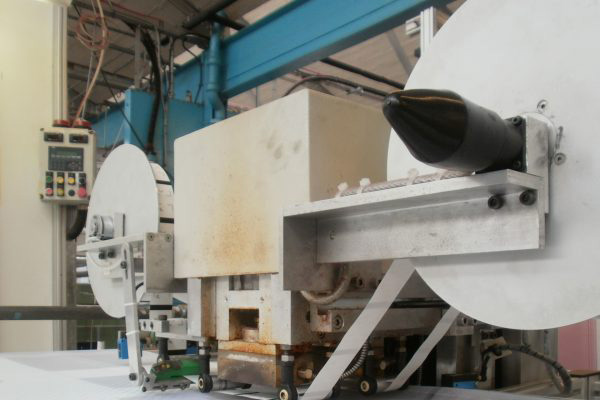
Short Description
Our client, a dyer of textiles, approached Laplace Industrial Solutions to develop a control system for a replacement textile stamping machine. The clients had an existing machine which would stamp headscarves fed into the machine from large rollers at periodic intervals.
The new machine required the capability to print two stamps onto each headscarf instead of one, and the control system had to allow the choice of stamps in different combinations. The control system also needed to regulate the temperature of the stamp. A control system was also to be provided to operate the drive feeding the cloth into the machine.
- Date : 2017
- Categories : Industrial Solutions
- Client : Dyer of textiles
Laplace Industrial Solutions sought to improve the existing process through the creation of a more efficient machine. We sought to do this in three ways: to expand the capacity of the rolls of fabric the machine could handle, to make it possible for the machine to use two stamps instead of one and lastly to increase the rate of output. However, we faced challenges in how best to improve the existing machine to make it stamp scarves at a faster rate, and in how to program a stamping system which allowed a combination of two stamps on a scarf instead of one.
Increasing the speed of the previous machine was not a viable option because the single motor drive system which pulled the roll of fabric through the machine often left material loose on the stamping head, and would also wind onto the end roller loosely. We resolved this by using a second motor on the feed roller, which provided a back tension on the fabric. The control system was programmed to provide tension at such a level that the material was tight on the stamping head, but not so strong that it would rip. Furthermore, the back tension ensured that the material wound tightly onto the end roller, ensuring that the space which the rolls of fabric occupied was minimised for storage and transit.
The stamping head was programmed with a matrix which allowed all the combinations of the two stamps which were available. For example, stamps A and B can be combined thus: AA, AB, BA and BB. Sensors were employed to detect the weave on the fabric and hence the correct location for the stamps. The stamper would then press onto the fabric, attaching the insignia using heat.


